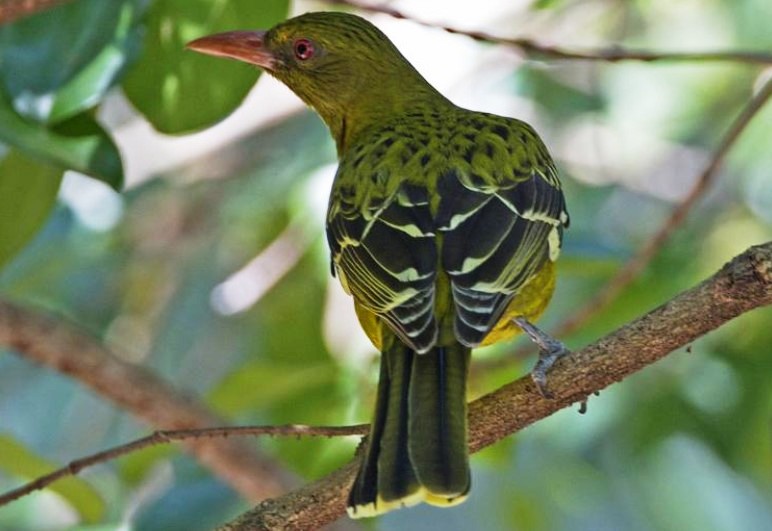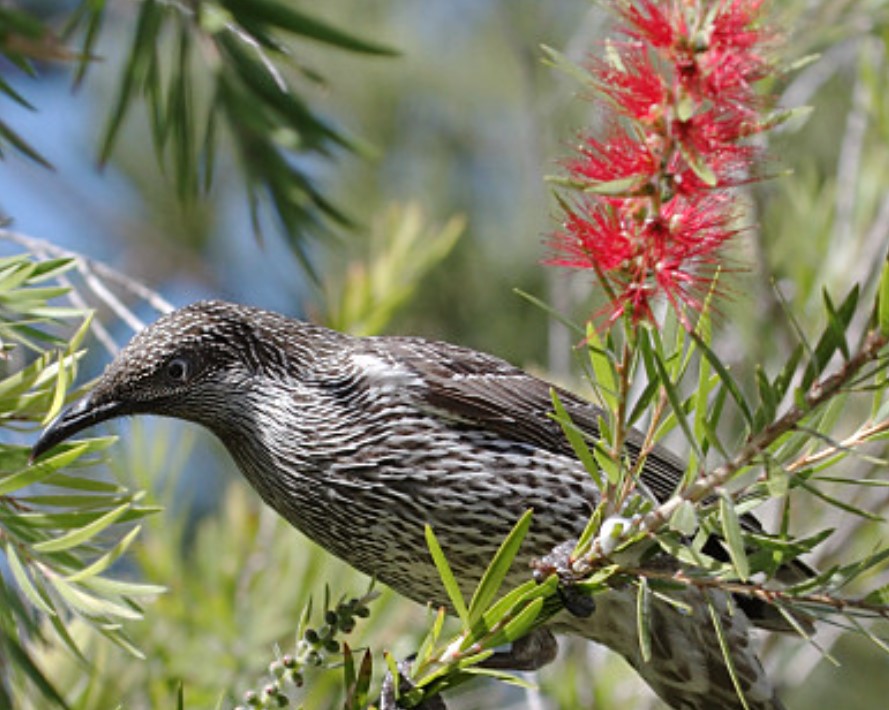In northern Australia, the Green oriole and Australasian yellow oriole (Oriolus flavocinctus) carry bubbling calls during the hottest hours on the hottest day of the year. Established males sing sporadically throughout the day year-round to mark their territories, despite being sedentary birds. An individual bird may call almost nonstop for two hours under a sheltered perch in the tree canopy. Pee-kweek is the call of the Yellow Oriole. It is a harsh scarab when aggressive. Despite this, it sings a rich, deep, bubbling yok-yok-yoddle. There is a sustained subsong of soft warbling. Yellow-bellied Orioles, Green Orioles, Australian Yellow Orioles, and Green Mulberries are common names for this stunning bird.

Males are slightly larger than females of the Australasian yellow oriole, measuring about 270–280 mm long. They are often difficult to see, as their yellow-green plumage blends with the foliage, and the only thing they can be heard for is their deep, bubbling musical calls. In rainforests, mangroves, thickets along waterways, swamps, and lush gardens, they are nevertheless common. Green orioles are common in gallery rainforests and monsoon vine thickets, especially along permanent streams. Almost exclusively feeding on fruit in the forest’s middle and upper strata, they remain within the canopy, where they are protected from the elements.
Their feeding and sitting are slow and methodical, lasting several hours before they fly on indirect, deep undulations to another tree 100 or more meters away. Despite their long singing bursts, they are quiet birds that barely stand out among the foliage except for occasional bursts of singing. Incubation and brooding are mostly carried out by the female, but both parents feed the young, primarily by regurgitation. Young birds are dispersed after they have fledged, and family groups stay together for a few weeks.
They can wander quite widely in the months following, entering marginal habitats such as mangroves, paperbark galleries, and gardens, and often following rivers inland. Particularly at the end of the dry season, when resources are scarce, small groups of six or eight gather in profusely fruiting trees.

MALE: General plumage is bright moss green, with yellow under tail coverts and belly. Its plumage is finely streaked black, ranging from a few streaks on the foreparts to more all over; its mantle is heavily streaked with broad, arrow-shaped streaks. The primaries are black; secondaries and upper wing coverts are black. However the edges, and tipped with lemon-yellow to white, the tail feathers are black, edged with olive, and tipped with lemon-yellow; the central tail feathers are browner. There is a dull pink-red bill along with red eyes. The feet are dark grey in color. The female is yellower and more streaked than the male.
The upper parts of the immature bird are pale green, while the underparts are bright yellow with coarse black streaks. Green streaks on the head contrast with yellow eyebrows. The feathers on the wings and tail are brown. The eyes are grey-brown and the bill is black to brown. Breeding and nesting take place between October and March. It builds a cup-shaped nest from bark fiber, grass, dried leaves, and plant tendrils bound with cobwebs. Nests are lined with fine plant material; usually fastened to thin horizontal forked branches between 2-20 meters high in outer branchlets of trees.
Usually, two to three eggs are laid by the green oriole, blotched with brown and gray colors. They are approximately 34 x 23 mm long and have an oblong-oval shape. Females are primarily responsible for incubation. From Sarina to Normanton, Queensland, as well as Broome, Western Australia, and eastern Arnhem Land, the green oriole can be found on the coast of northern Australia and offshore islands. The Aru Islands and southern New Guinea are also included. Australia has only one race out of two or three. Australia and New Guinea are home to the green oriole, also known as the Australasian yellow oriole.
Read More – IDENTIFICATION OF BALTIMORE ORIOLE FEMALE AND MALE







